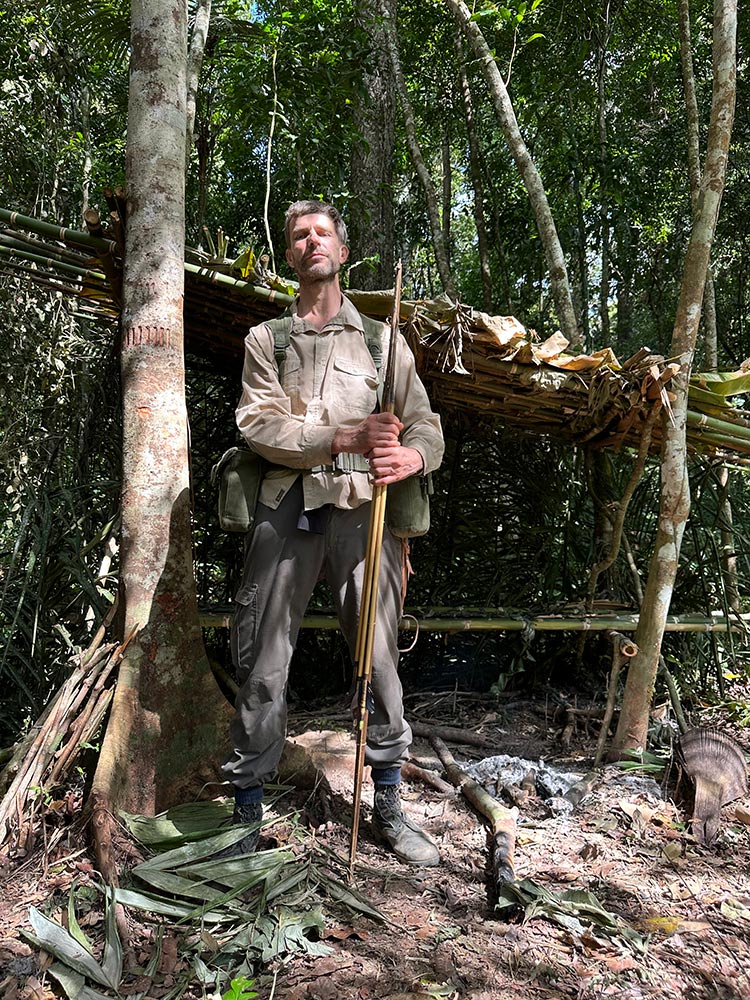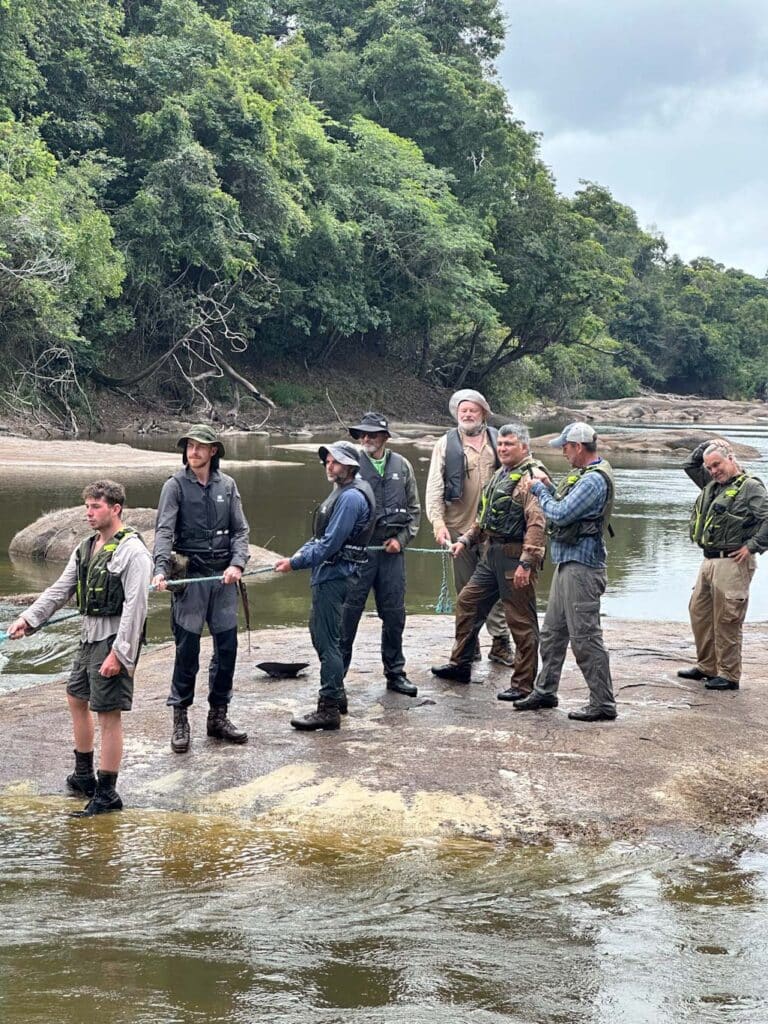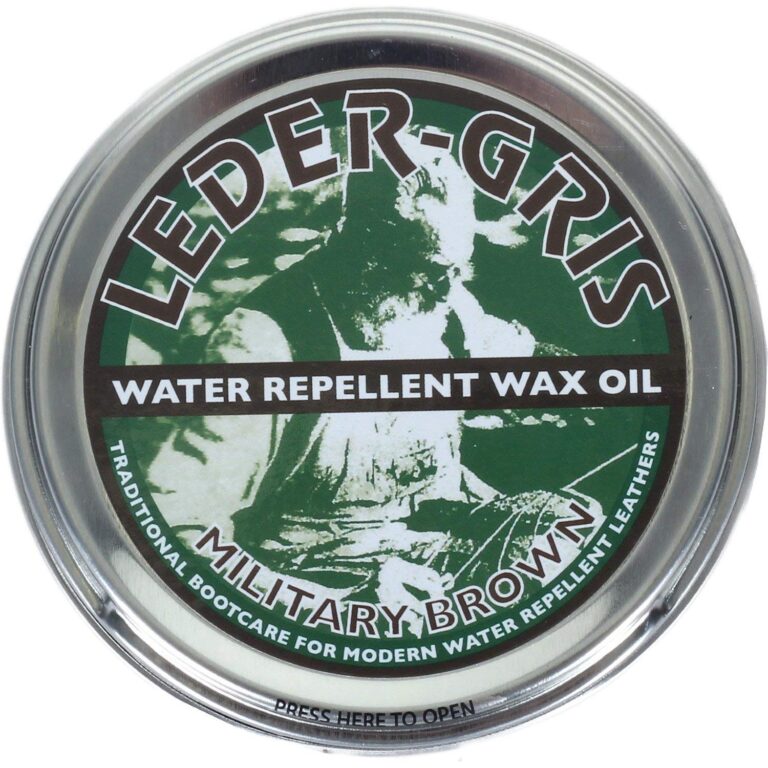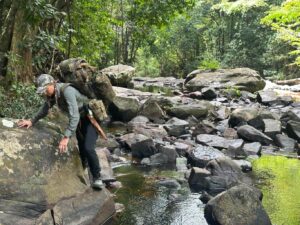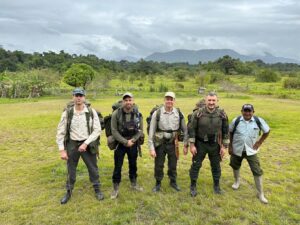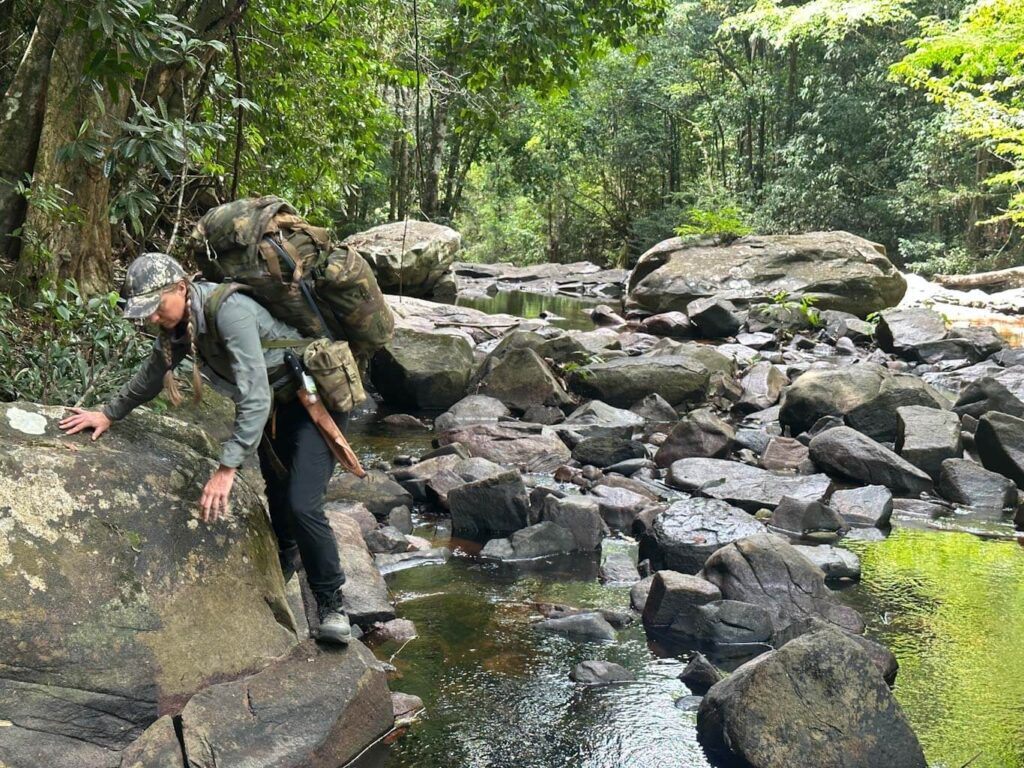
it is a jungle choosing the right jungle boots
Jungle boots and what to wear are probably one of the most debated areas when discussing equipment with guests or addressing questions about jungle essentials. You might ask yourself: Is it really worth investing in a boot specifically for a jungle environment? Firstly, you will have to ask yourself, How long am I going to stay in the jungle? Secondly, you should ask yourself: What is my purpose for visiting the rainforest?
The Importance of Proper Footwear in the Jungle
Having the correct footwear in the jungle is of absolute importance, as your feet are the single part of your body that will be most in contact with the environment. There is a never-ending array of things that can cause harm, such as spikes, snakes, scorpions, ants, and more, but there are certainly several great options that can all serve the same purpose.
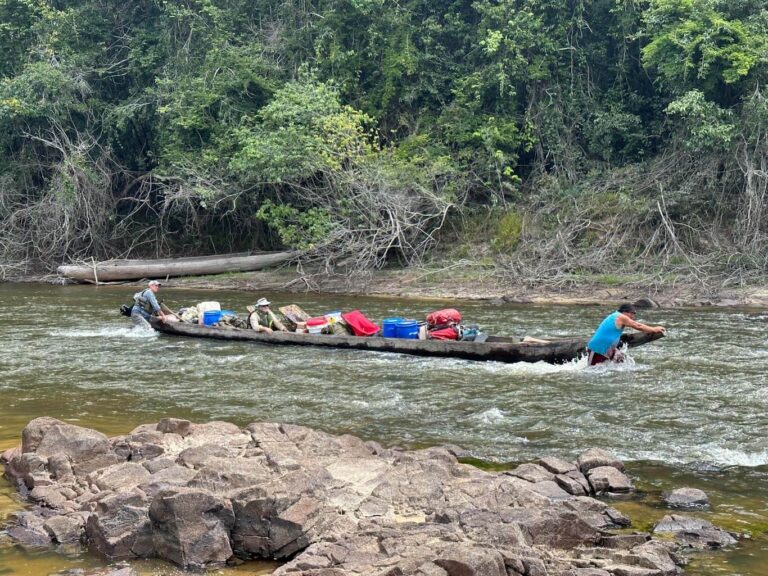
Types of Jungle Boots
In this article, we will touch base on how to choose jungle boots specifically made for tropical environments, long boots/wellies, regular hiking boots, and trekking shoes. We will also discuss why certain types of shoes are simply insufficient and the risks associated with assuming a normal tennis shoe can suffice, for example. Simply having the right shoe is not enough by itself, but as our articles develop, we’ll delve deeper into socks, foot care, what to wear when out of boots and in the river, and many other useful pieces of advice in other articles.
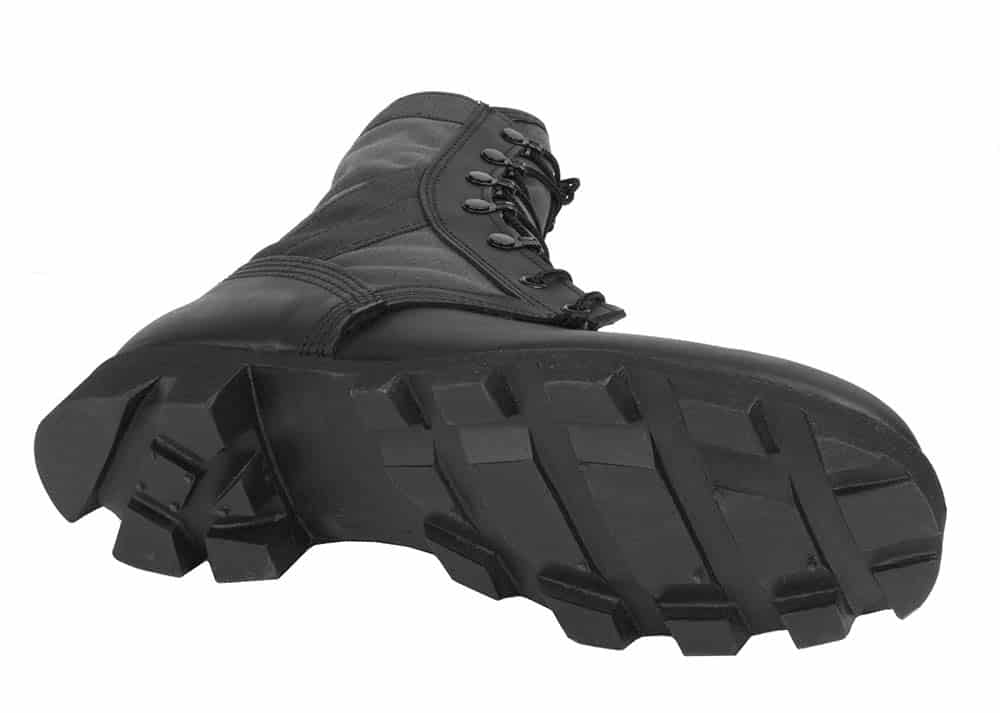
Specialized Jungle Boots
The history of jungle boots goes back to around the mid-1940s when militaries were facing issues with the condition of their soldiers’ feet operating within the tropical zone. In certain instances, it got so bad that whole regiments that had been exposed to wet environments for too long were disabled and finally put out of service until recovery. The models we have today originated from being tested throughout active service in military units across different continents, but the boots as we know them today originated from the lessons learned predominantly by the US army in the Panama and Vietnam wars. Armies from Brazil to France to the UK, to name a few, adapted and adopted the fundamentals of this design.

Different prices in jungle boots
Jungle boots specifically made for the environment are by far the best alternatives in all senses; they come in many different brands, varieties, and qualities. There are market leaders such as Altberg and Rothco, among a few others, and these vary in price from approximately $90 to $250 US dollars. Please note that there are many fake versions on the market! We will get around to recognizing these below.
The classic style jungle boots
If we start out with the classic type of jungle boot that is found if you search online for “jungle boots,”. This type is the design of the M-1966 Jungle boots. This boot comes with what is called a Panama sole; within the sole is a plate of steel or other hard material to ensure protection against penetration from beneath. This was originally implemented for safety against bamboo traps and nails, but due to the nature of the risks associated with the floor in a jungle, this protection from beneath is a great asset to any footwear for the jungle even today. The sole is created very intelligently in a way that optimizes grip in mud and uses the downforce of the operator’s weight to force mud out to be ready to give traction for the next step.
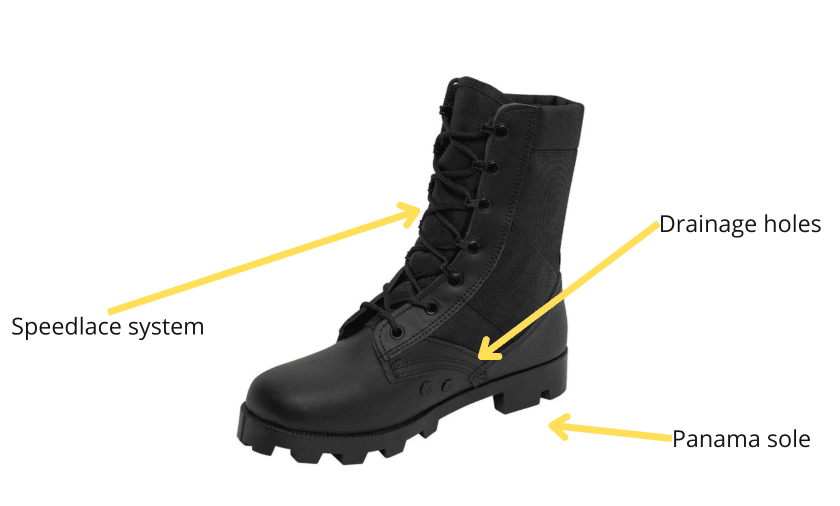
These boots are fitted with a speed lacing system for effective tying and drainage holes that, as the user leaves a body of water, push water out of the boot through these holes. Are you in the rainforest for any activities that include walking in the forest? Especially in the rainy season, you will never be able to keep your feet dry, but it is a matter of getting them drained to not be submerged for hours of walking. Again, we will further go back to foot care in a detailed article another time. Having a jungle boot in itself will not save you from blisters or athlete’s feet.
Watch out for the fake jungle boots
There are a lot of different brands making jungle boots based on the M-1966 Jungle Boot, but be cautious! There are a lot of fake ones as well. Firstly, whether you buy it directly from a supplier, Amazon, or eBay, first and foremost, you have to look carefully at the boot lacing system. The fake ones will have holes instead, all the way up the neck of the high angle support. Any boot that does not come with the speed lacing system is fake. In fact, even some with speed lacing are fake, so always read reviews before your purchase! The most common result of a fake version is that the sole falls off after a few days in wet conditions, and while it can be stitched back with both metal wire and strong fishing line, we found that the pricing difference from a fake version to a real one is often so little that it is just not worth it.
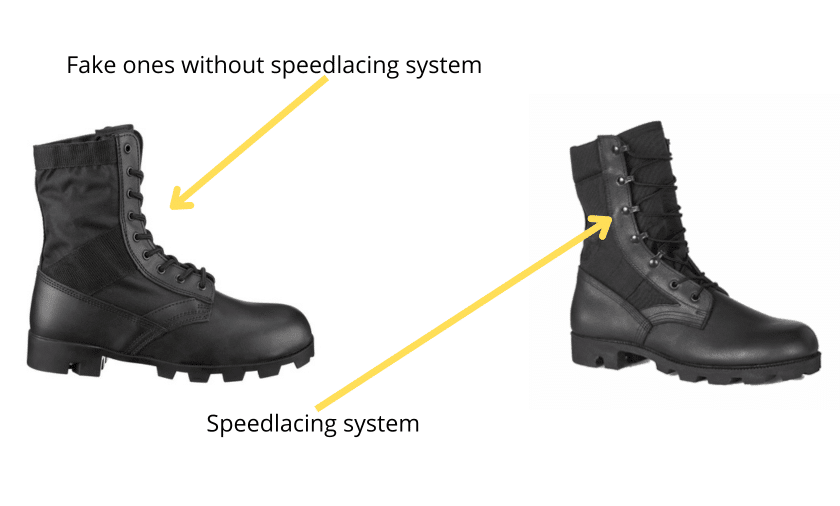
What are the pros and cons of classic jungle boots?
Firstly, these boots are known to take a long time to walk in, and they often come in some odd sizes that can make it hard to find the right fit. Typically, you can also get them in a narrow or wide version. Our advice is that if you decide to go for this type of jungle boot, order them well in advance and then wear them for a good period of time to ensure that they fit. If they do not fit, send them back and try another size. Then go out in the woods, and do not make the mistake of taking them for a walk on a straight trail. You have to get off the trail, hills, mud, and water and feel what they are doing to your feet. Another thing is that the jungle boots will be significantly different when carrying loads, so remember to test them well. We often have people who join an expedition with this type of boot without walking them in, and trust us, you will regret it deeply if you start getting scrapes and blisters.
Pretty close to indestructable
Once these boots are walked in and they are the right fit, they are pretty close to being indestructible. We have some that have been left back for our team members in indigenous villages, and they have endured years of absolute abuse. At the same time, they are a reasonable choice if you want the right equipment but are probably only going to use them for one trip.
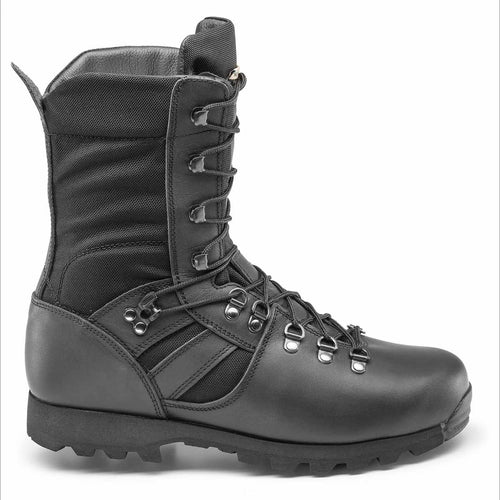
The Altberg jungle boot
A British company called Altberg makes this top-of-the-line jungle boot. These boots are, from our opinion, superior to all other types. Personally, we have been through a few of them, and while the most recent purchase has shown them to be unfortunately of poorer quality than previously bought, this is still our go-to. The boot in itself, when in good fit, is very easy to walk in, comfortable and offers great protection and comfort while moving through even the harshest jungle seasons. They are also designed around the speed lacing system, and you can opt in to get them tailor-made for your feet by sending in measurements directly to the factory. If you consider this, please do it well in advance, as this can take some time.
2 types of altberg jungle boots
They have two models: the Jungle Panama Lite Boot and the Jungle Microlite Boot, which distinguish themselves by their slight difference in weight and very different soles. The Jungle Panama Lite Boot is fitted with the classical Panama sole, a system that creates great grip in muddy and wet conditions, as mentioned above, though it has to be mentioned that this design falls short on wet rocks, especially when carrying a heavy rucksack. The Panama Lite Boot is fitted with a Defender Hi-Traction Sole. Some years ago, you could choose a Vibram sole that we had great feedback from our clients about, but the new type is getting very mixed reviews from our guests.
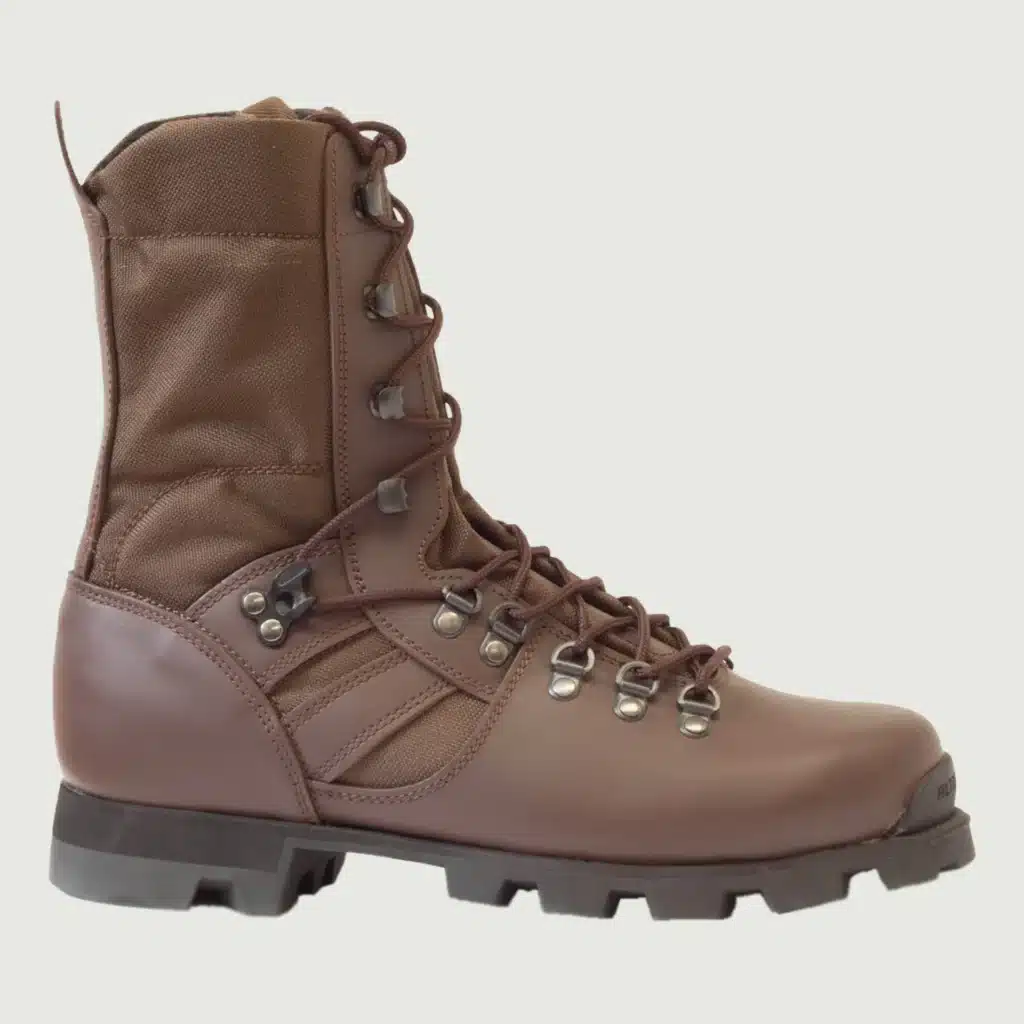
Pros and cons of Altberg jungle boots
So what are the pros and cons of the choosing the Altberg jungle boots? The price is definitely a con. We recently replaced ours, and the price has skyrocketed. At the same time, the quality seems to be degrading. It is very unfortunate, as, in our opinion, they are the best jungle boots to have ever been created.
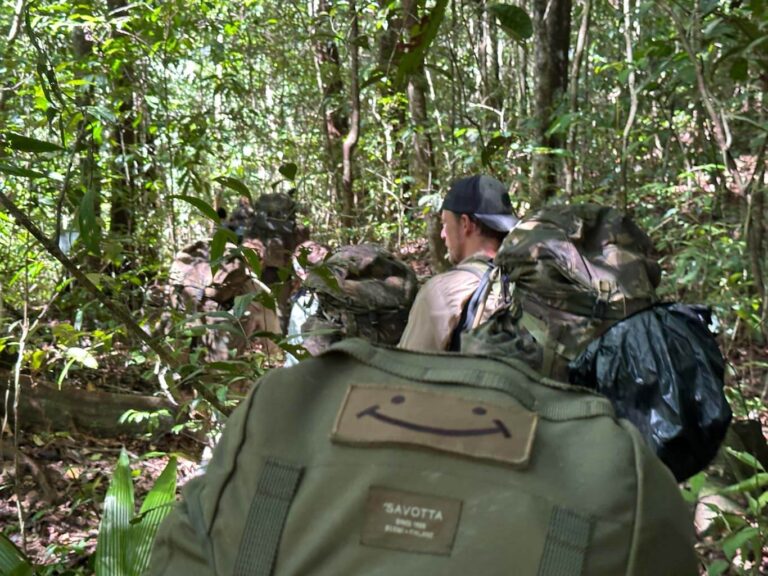
Altberg jungle boots are not perfect
The shoelaces they come with are weak compared to the environment they are being used in, so we have always exchanged them with paracord. The problem with doing that is that the fittings created on the side of the boot for enhancing the fitting when tensioning your shoelace are too small for paracord, leaving them completely redundant and a very annoying feature on the boot.What is even worse is that these can have the tendency to flap around and get caught in fishing lines, vines, or walking down a hill in a root, ultimately creating a dangerous situation. When all this is said, if you have the budget and you want the best equipment, we will advise you to go with Altberg jungle boots. They are simply superior to any other boot we have ever worn in the jungle.
Can I use a jungle boot in a temperate climate?
Generally speaking, for jungle boots, whether it be the classic M-1966 Jungle boot type, Altberg, or something else, if you are a person who comes from a temperate climate, they actually do make for great spring, summer, and autumn shoes before it gets too cold. Just because they are made for the jungle does not mean that their strength and durability cannot be applied to your own neck of the woods.
Maintenance and Storage Tips for Your jungle boots
There are probably many ways to do this, but for maintenance and storage, what we do is wash them down, scrub them well with water, and while they are still moist, we give them a good, thick layer of high-quality leather grease. Then they will be soft and ready for the next trip. Should you ever find yourself in an area where your boots are exposed to shifting very wet and extreme sunlight for many days on end, we advise this can be done every week or so and they will live for years! Locally in Guyana, many of our team members from the indigenous communities just use cow fat. You’ll have a fly or two following you until you get them a bit dirty in the forest, but it works just as well.
A great little tip for someone who will only use them once is to leave them back for local guides. We assure you that guides will love them and, every day, will use them to their full potential rather than letting them gather dust in your closet.
Long Boots or Wellies as jungle boots
This is probably the most common footwear for local guides and members of indigenous communities in the jungle. From our perspective, this is the second-best choice. They are cheap, often widely available locally, and offer great protection for the user. This, at least if you choose the right quality. Your fancy-design ones from a trendy store are not making the cut, but if you buy a good-quality one from an outdoor store near you, they might be able to do the job. If you decide to go with a local one, then go to companies that supply the mining or construction sector. Ask them what everyone is buying, and chances are they know which brand to go for. Always look at their sole and ankle support; a good quality one will come with a sole offering a strong pattern, as well as being reinforced around angles and tips with thicker pieces of rubber.
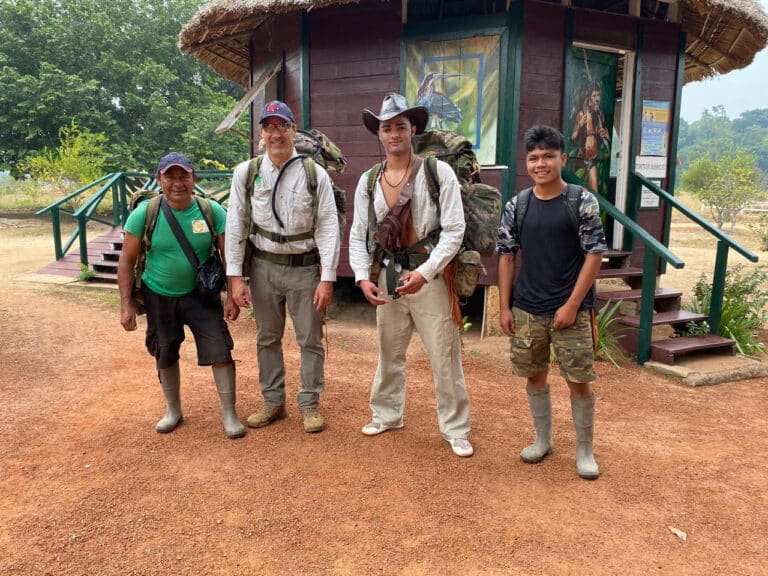
Walk them in before your jungle trip
Long boots come with the benefit of being the best option to keep your feet dry, at least within what is possible. On the other hand, they are known to be quite rough on the feet and should always be worn with good socks, sometimes in several layers. Locally, in Guyana, they use football socks and at least double-layer them. Especially the moment you start walking in hills and terrain, they are known to be able to give gruesome blisters.
The dangers of wearing long boots in the jungle
One thing that is general advice when it comes to long boots is that they do pose quite a danger when traveling in boats or walking in deep water. They will fill up with water, and if you, as an example, fell out of a boat, the underwater current could pull you down and ultimately increase your chance of drowning. Therefore, our advice for users of long boots is to always take them off once the boats start moving.
Maintenance and Storage Tips for Your jungle boots
Will water get in the boots? The answer is likely yes. They are, though, very simple to drain. There is a technique of resting one arm for support on a tree, then lifting one leg with the boot on to an angle where all water runs out. Alternatively, simply sit down, pull them off, and then empty them. The biggest advantage by far about long boots is the fact that they do not have shoelaces. You can simply take them on and off effortlessly.
Footcare 101 in the jungle
This brings us to an important point about the difference between choosing long boots/wellies compared to any other. Athlete’s feet occur to our feet when they are wet for too long. It is a fungal infection called Tinea pedis. An article on foot care will be written, but because long boots are so easy to remove, your feet will be out of the boot frequently throughout the day. You would not believe what 10 minutes of fresh air or a quick rinse of your socks in a jungle creek can do for your feet on a long expedition. If you are wearing a jungle boot with shoelaces, chances are you will be wearing them from morning until night on a normal day.
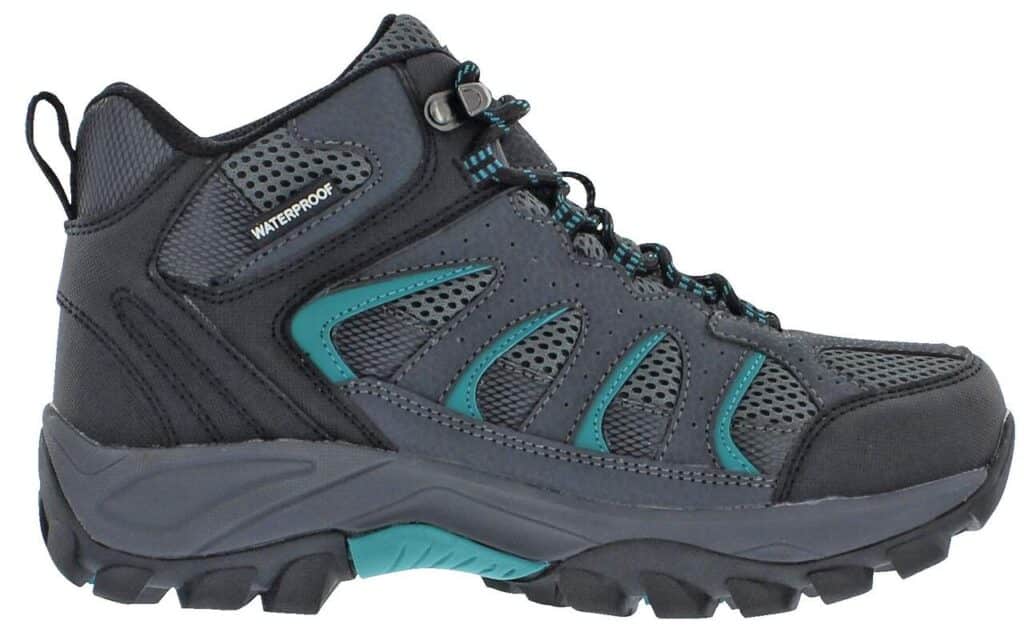
Want to wear normal hiking boots in the jungle?
So you have a pair of hiking boots back in your closet, and you want to bring them to the jungle? They can potentially work, but they are not ideal, and honestly, most of them will, if brought in during the rainy season, have their last hike. Firstly, though, Gora-Tex boots are an absolute NO-GO! Goratex is brilliant for a temperate or cold climate, as it keeps water out very effectively. Unfortunately, as water will get into your boot from the top, it will also keep water in. As they are not made with drainage, they are known to speed up the process of getting severe athlete’s foot. We have seen this happen within one day of hiking, so by all means, do not attempt to use them for your jungle visit. Most frequently, we see the sole come off; this happens as a combination of several things, such as acidic mud, being under pressure while pulling out of mud, and the continual shift from wet to dry. The question you might ask yourself is; Am I ready to discard these hiking boots? A trip through a wet, rainy season is likely to be their last one.
Protection against snake bites on feet
We cannot talk about the rainforest without talking about snakes, and for all these above-mentioned suggestions as jungle boots, they all share the fact that they have a high neck that offers ankle support as well as better protection against snakes. Snake bites are luckily very rare in the areas we operate, but there is always a chance, so why would you not put yourself in a position with the best possible protection? The biggest snake we have to deal with is the Bushmasters. The largest venomous snake in South America, and I doubt whether any of the boots would be able to effectively stop a bite from one, but when snake bites do occur, it is often smaller snakes like Fer-de-lance, where a good solid boot for sure will enhance your chances of the snake never being able to penetrate into your tissue. We will write an article about snakes separately, but do remember, they are NOT out to get you. We enter their environment and common practices of mitigation, and using local guides with the ability to spot them in advance will decrease the chance of an unfortunate encounter to very little. You can always consider using snake gators; we are not massive fans of this solution and do not use them, but sometimes guests bring them. They can be a great asset if you use sneakers or low neck trekking shoes, as described below.
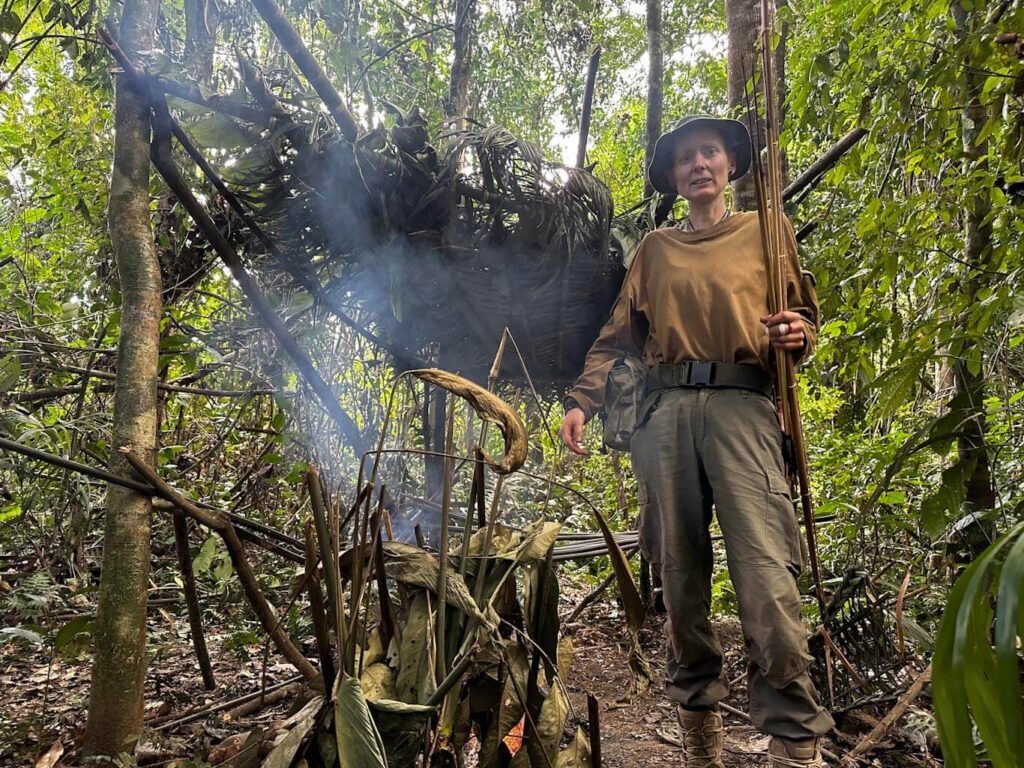
Sneakers and trekking shoes in the jungle
Sneakers and trekking shoes offer less support for the ankles and definitely less protection against any of the things that can get you in the environment. Especially if they are made with fabric that is supposed to let air pass into the shoe. What you will face mostly at the bottom of the forest are ants, ticks, sometimes scorpions, etc. These will very easily be able to start biting or stinging you if you are only wearing a small shoe. For a walk down a well-cleared trail or path, they might do it, but for trekking, hiking, or expeditions, they simply do not make the cut.
Tuck in, cover up!
In any case, remember that pants have to be tucked into whatever shoe you are wearing to make sure things do not crawl up into your pants, and when boots are not in use, they are either put upside down on sticks planted in the ground or hanging in a line with your general equipment. Still! No matter what, always check your jungle boots before you get into them again!
Footwear never to be used in the jungle
For any walk, work, or longer stay in the jungle barefoot, Vibram-style five-finger shoes or tiny tennis shoes are just not good enough. There is too much contact with the environment, and our advice is to not attempt it.
Get in touch
Finally, as always, we welcome any questions, notices of areas we missed, or simply feedback about our articles. Get in touch, and we will be happy to help you make the right choice of footwear for your next expedition, jungle survival course, or jungle tour.


